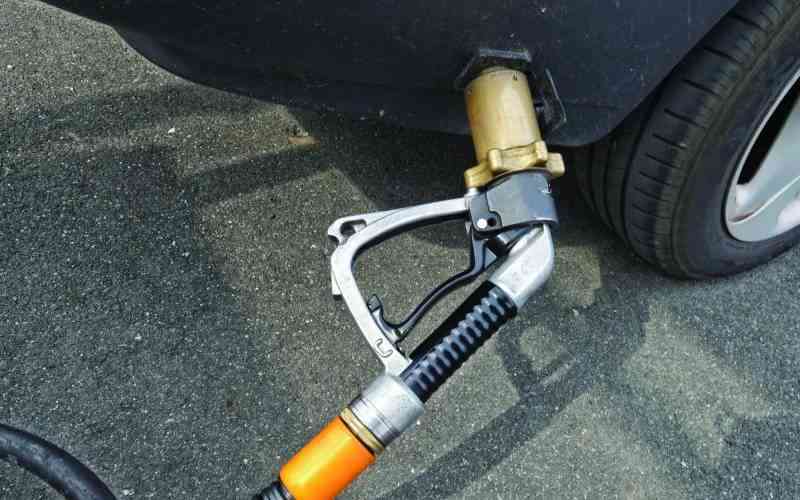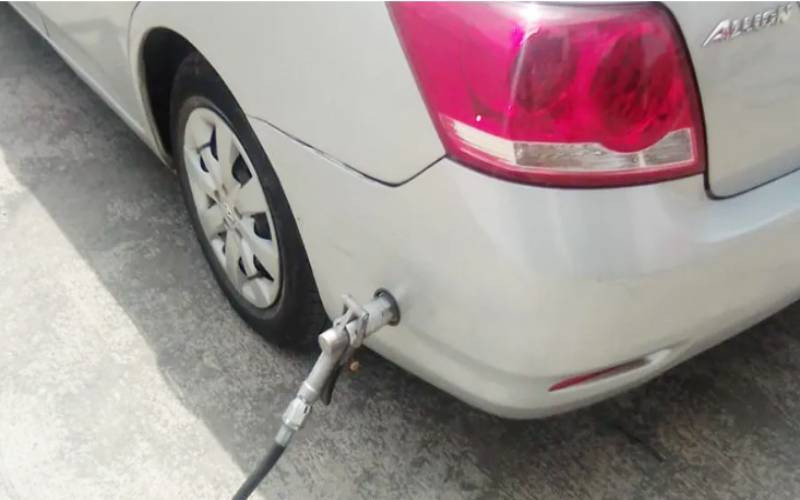
The automotive industry remains dynamic as hard economic times continue to hit hard globally.
It is no surprise that in Kenya, several motorists especially online taxi-hailing drivers are ditching petrol-propelled engines and embracing Liquefied Petroleum Gas (LPG) ones.
Several LPG stations have also been mushrooming not just in major towns but even in the rural areas where motorists are inclining towards LPG cars over petrol ones.
Interestingly, the dynamics have also created jobs for mechanics who have learnt the craft of enabling a motor vehicle to operate on both LPG and petrol.
But is it true that cars running on LPG save fuel expenses compared to their predecessors? We find out.
Cost of LPG vs. Petrol
According to the latest Energy and Petroleum Regulatory Authority (EPRA) review, a litre of petrol costs Sh217.36 per litre in Nairobi compared to a litre of LPG that retails at around Sh126 depending on the location.
It is the over Sh90 difference that has pushed most motorists to embrace LPG vehicles.
A motorist driving a well-maintained Toyota Vitz with a fuel tank capacity of 42 litres while doing an average of 17-18km per litre on highways will need Sh9,114 shillings to cover the 340Km distance between Nairobi and Kisumu. On the other hand, one driving the same car model but LPG-operated will only need Sh5,292 to cover the same journey.
Other benefits of LPG cars
Apart from cost saving, environmentalists have been rooting for the LGP engines since they are often perceived as a cleaner-burning fuel compared to traditional petrol.
While it still produces emissions, it may produce fewer greenhouse gases and air pollutants.
The flexibility that a motorist gets with a dual-fuel capability vehicle makes it more attractive to most motorists who have the option of operating on both LPG and petrol.
This dual-fuel capability provides drivers with flexibility and convenience. They can switch between the two fuels based on availability, cost, or other factors.
In Kenya, the availability of LPG refuelling infrastructure has greatly influenced consumer choices.
Most motorists especially in Nairobi and Mombasa find it more convenient to choose the LPG-powered vehicles commonly known as autogas vehicles, due to the existing extensive network of LPG stations.
This writer visited and engaged a renowned mechanic in Nairobi (Dickson Musungu) who has specialised in switching petrol engines to LPG ones or both.
"What many people don't understand is that LPG (liquefied petroleum gas) cars work similarly to traditional gasoline (petrol) cars, with some modifications to accommodate the different fuel properties. That is where we mechanics come in," Musungu stated.
He took The Standard practically through the process starting by showing where the fuel (LPG) is stored.
"The Liquefied Petroleum Gas is stored in a high-pressure fuel tank in liquid form. The tank is typically located in the vehicle's trunk or another designated area, depending on the vehicle's space," he explained.
During the conversion, the LPG cars are equipped with a fuel injection system that includes an LPG converter or vaporizer which converts the liquid LPG into a vaporized form before it enters the engine.
He added that it's not an easy task to switch a petrol car to LPG because the mechanic must have deeper knowledge of engine modifications to optimize performance with the alternative fuel.
"It is not as easy as we make it look. the engine modifications may include adjustments to the timing, fuel injection system, and other components. Remember, we have to ensure that the owner of the car has the freedom of dual-fuel capability allowing them to run on both LPG and petrol," Musungu added.

The combustion process of an LPG occurs after the gas has vaporized; it is then mixed with air in the engine's combustion chamber.
The air-fuel mixture is then ignited by the spark plugs to generate power and propel the vehicle.
Alex Mwita, one of the motorists whose car was being worked on told The Standard that it was his second vehicle to go through the modification.
However, he warns that it requires a proper engine management system.
"I operate Bolt and I have since saved a lot on fuel and hence able to even buy another car to supplement my business. However, it is key to note that LPG cars are equipped with sensors that monitor various parameters, such as the air-fuel mixture, temperature, and pressure. This system adjusts the fuel injection and other engine parameters to ensure efficient combustion and optimal performance. Once they fail, you can't move," Mwita advised.
According to the mechanic, LPG has a higher octane rating than petrol, and it typically has a higher energy content. This means that LPG can result in more efficient combustion in the engine, potentially providing better fuel efficiency and, consequently, cost savings.
It is key to note that before deciding to switch to LPG, it's advisable to conduct a thorough analysis based on your specific driving patterns, local fuel prices, conversion costs, availability of LPG stations in your locality, and overall cost-effectiveness of using LPG compared to petrol.
 The Standard Group Plc is a multi-media organization with investments in media
platforms spanning newspaper print
operations, television, radio broadcasting, digital and online services. The
Standard Group is recognized as a
leading multi-media house in Kenya with a key influence in matters of national and
international interest.
The Standard Group Plc is a multi-media organization with investments in media
platforms spanning newspaper print
operations, television, radio broadcasting, digital and online services. The
Standard Group is recognized as a
leading multi-media house in Kenya with a key influence in matters of national and
international interest.



